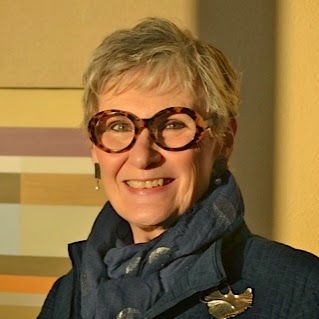ODE TO A BLONDE BOMBSHELL
Bonnie and I both had new jobs. She was the new Vice President of Nursing/Clinical Care at Children’s Mercy Hospital (CMH) here in Kansas City, and I was the Executive Director of a brand new freestanding bioethics center, Midwest Bioethics Center (now the Center for Practical Bioethics). The year 1985 was a great one for Bonnie. That year she married her Pete Peterson, an attorney who knew how lucky he was to have landed Bonnie. They adored one another.
Ethics Committee Pioneer
CMH was one of the Center’s “early adopters.” There was a group of physicians there who had met regularly for a number of years and included one of our founders, Hans Uffelmann, a philosopher at the University of Missouri – Kansas City. It was sort of a “journal club.” They would all read articles, and then meet for breakfast to discuss them. Hans convinced the group that they should transition into a hospital ethics committee, which was quite the thing for hospitals to do at that time, and that he and others at the Bioethics Center should consult with them in this transition and provide ethics education to them.
They agreed, and Bonnie was the administrator with whom we worked and who oversaw this transition. Ultimately, however, CMH established an ethics committee under the authority of the medical staff. Unfortunately, to them this meant that, although nurses were welcome to participate in the educational activities, they could not serve as committee members. (There was a lot of brouhaha about legal protection from disclosure regarding intimate case conversations.) Having come to know Bonnie and being aware of how much effort she had put into this, I thought she would be furious, but not so. That was not her style.
She let the guys proceed (and they were all male physicians), and she established a “nursing ethics forum” where nurses met monthly to also discuss difficult cases. It could not be called an ethics committee because there already was one in place and it was for physicians only. In a short time, however, physician members of the ethics committee became open to nurses presenting cases before their group and, eventually, nurses and others were invited to serve on the ethics committee. That’s the way Bonnie did things. Unlike me, she never stomped her feet or demanded anything. She simply decided what she thought best, and then she made it happen – quietly, unrelentingly….
Leader, Teacher and Mentor Extraordinaire
And what she thought was best was very impressive. She was part of the team at CMH that planned a new wing of the hospital with a Kaleidoscope theme. She was involved in CMH opening auxiliary clinics and ultimately a second hospital in the Kansas City metropolitan area, bringing hospitals together to support air ambulance services that none of them could afford separately, and establishing a neonatal ICU at another hospital. She was also an active and dedicated member of the Bioethics Center. It was rare for us to hold any event that Bonnie was not present. She even participated in a week-long nursing ethics intensive seminar hosted by the Center, although she could have taught the course herself and actually served on the faculty for nursing leaders that followed her group.
After more than a decade, Bonnie left CMH. She accepted executive positions in a couple of other KC hospitals, but Bonnie loved children. That’s where her heart and passion were and that’s where she went – to the Children’s Hospital of Wisconsin. And when she called, we went to “do ethics” with them, and whenever she was in Kansas City, she called and came by the Center.
Fortunately, for us Bonnie ultimately returned to Kansas City, in part, to pursue her life-long dream of completing her PhD in teaching at the University of Kansas. None of her friends could understand why she thought she “needed” a PhD. Bonnie Peterson was one of the best teachers I have ever encountered, and her students LOVED her. She served on the Advisory Board for the School of Nursing as did I.
Colleague and Friend
One of my greatest honors was to have been recognized as an honorary alumnus by the School of Nursing. It wouldn’t have been like her to share that she was the one who nominated me. I learned that later from someone else.
Bonnie also came home because she was having some health problems. I can’t remember when Bonnie was diagnosed with cancer; it seems like a very long time ago. However, I do remember when I was diagnosed with cancer. It was in January 2011. Bonnie was right there for me. I got phone calls, notes, books, love and encouragement from her. In thinking about how to express my respect and admiration for Bonnie Peterson, I decided to share that Bonnie Peterson was the one person in my circle of family, friends and colleagues with whom I cried and told her how frightened I was. In her inimitable way, she said, “We’ll be okay. Nobody is better prepared than are you and I to deal with these issues. We’re good at making tough decisions about healthcare, and I’ll be there when you need me.”
Like many others, I feel blessed to have known Bonnie Peterson, PhD, RN, and I will miss her.
By Myra Christopher, Kathleen M. Foley Chair for Pain and Palliative Care
Center for Practical Bioethics





.jpeg)
